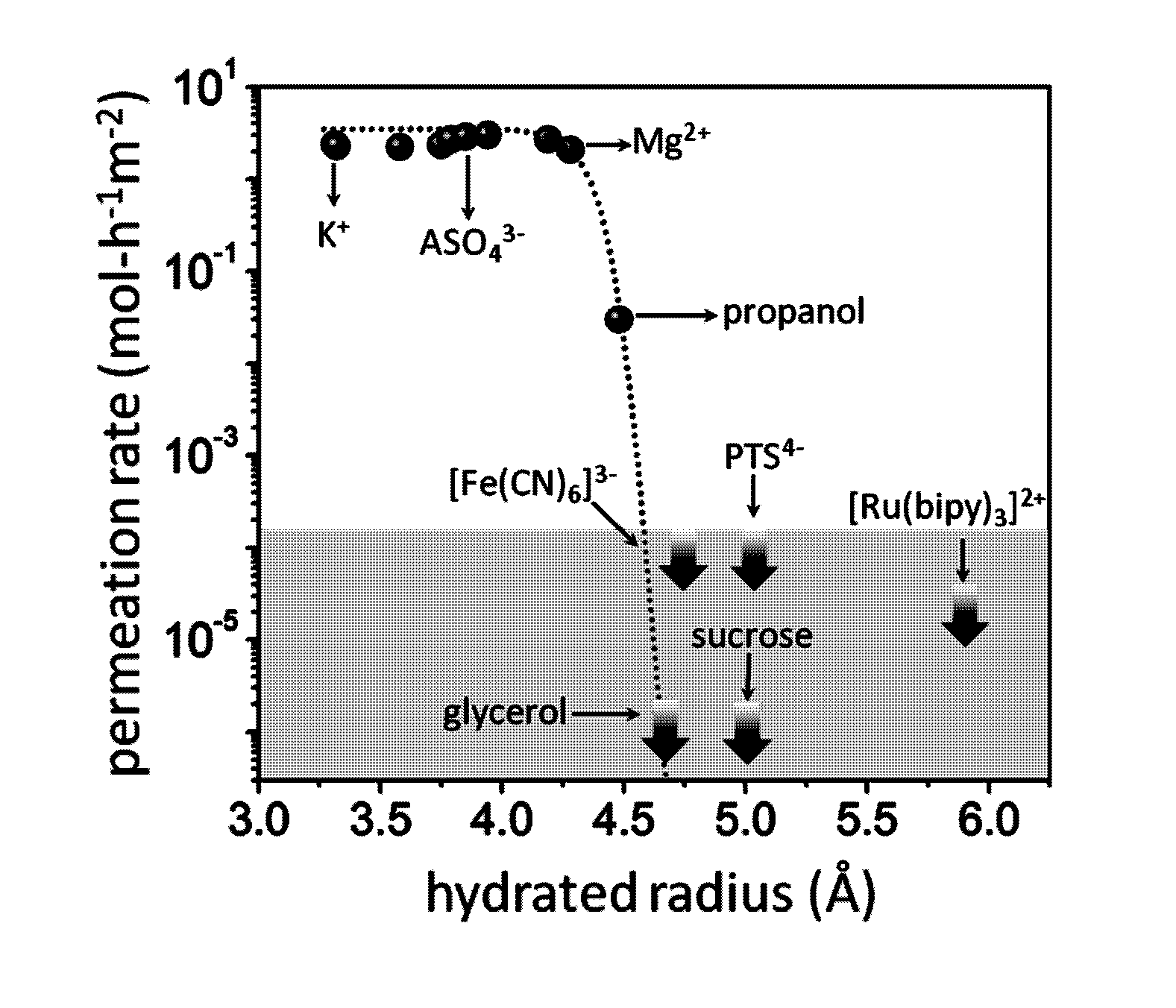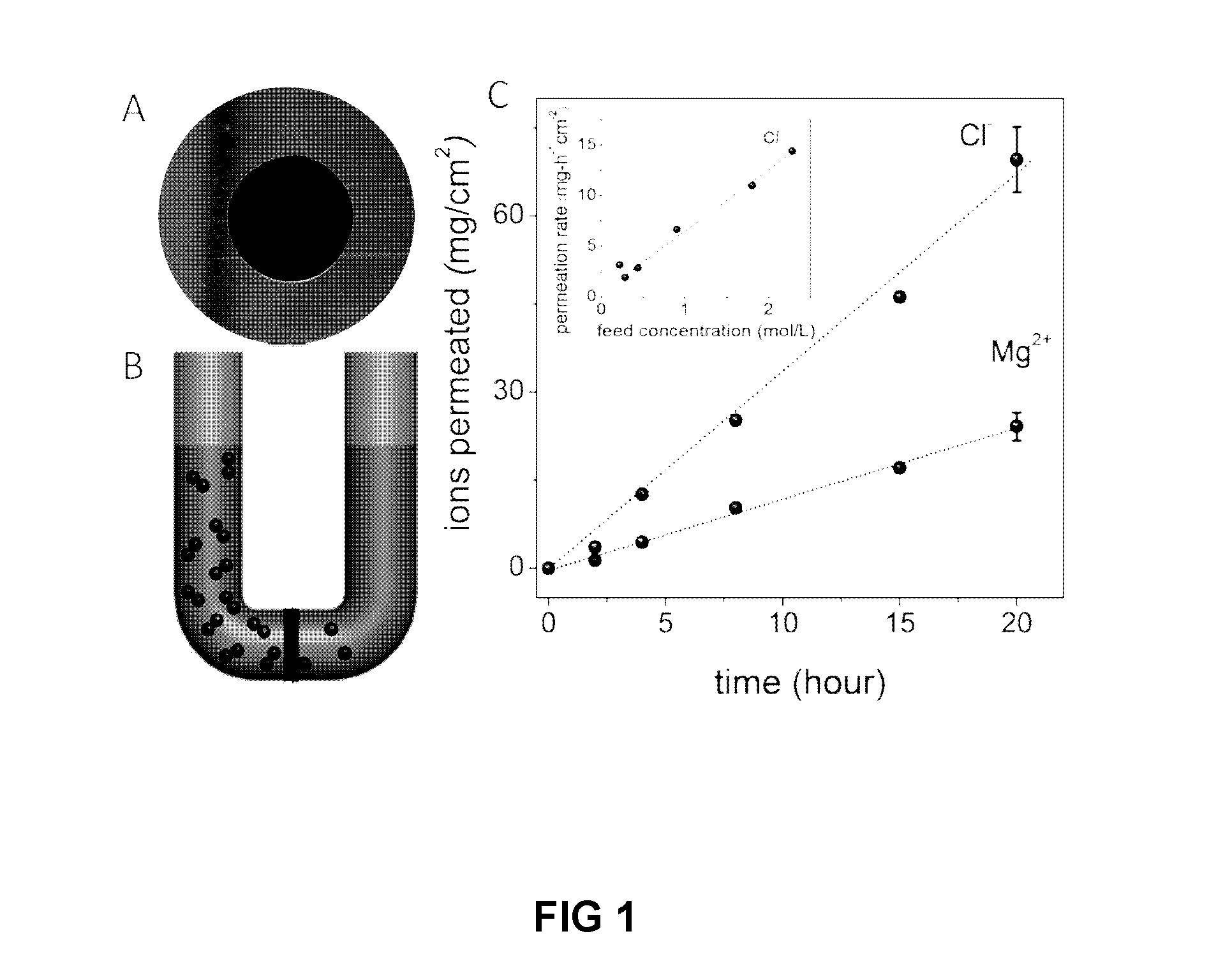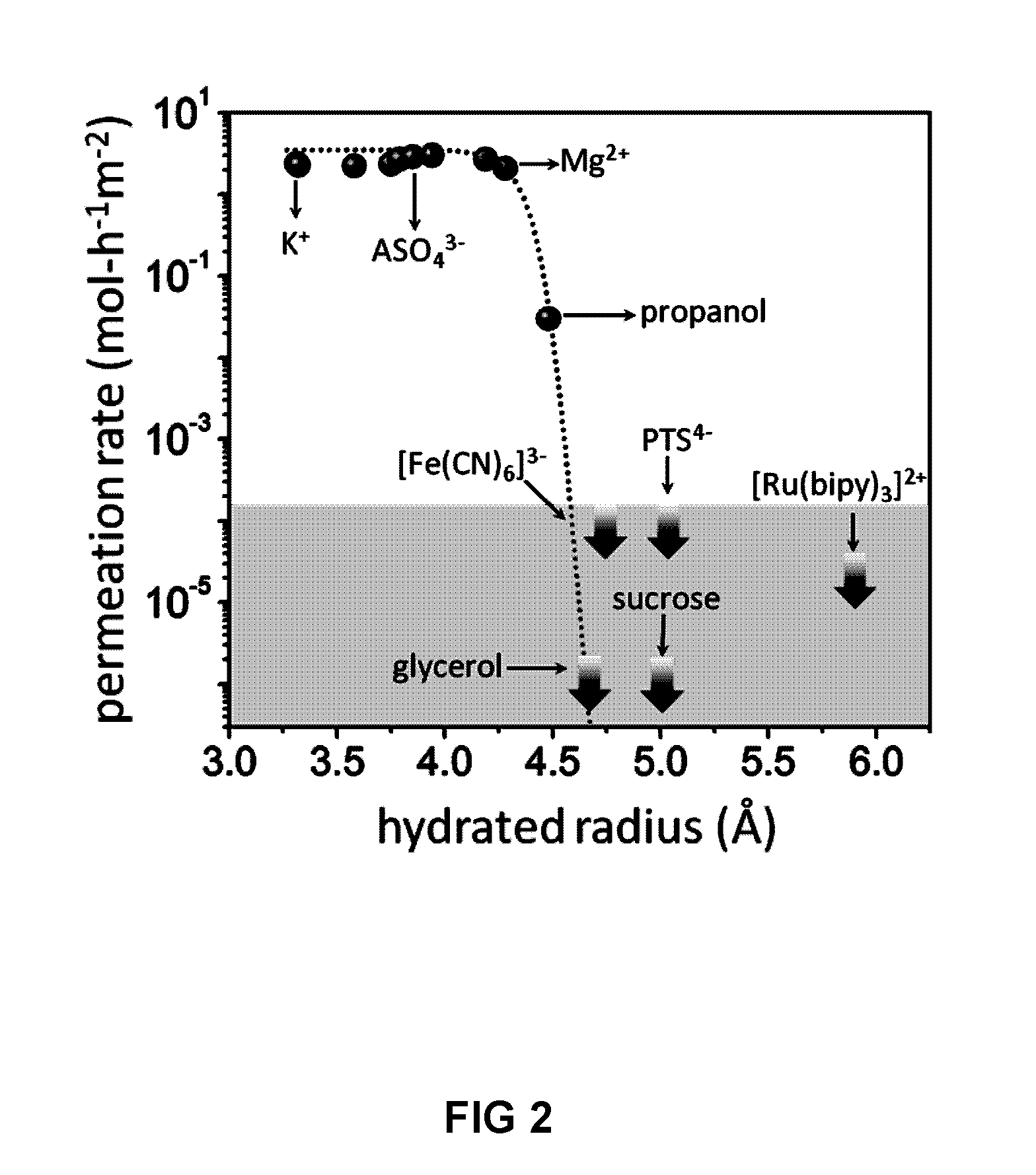Osmosis
a technology of osmosis and water, applied in the field of osmosis, to achieve the effect of improving structural integrity
- Summary
- Abstract
- Description
- Claims
- Application Information
AI Technical Summary
Benefits of technology
Problems solved by technology
Method used
Image
Examples
example 1
Fabrication and Characterization of GO Membranes and Experimental Set-Up
[0083]Graphite oxide was prepared by exposing millimeter size flakes of natural graphite to concentrated sulfuric acid, sodium nitrate and potassium permanganate (Hummers' method). Then, graphite oxide was exfoliated into monolayer flakes by sonication in water, which was followed by centrifugation at 10,000 rpm to remove remaining few-layer crystals. GO membranes were prepared by vacuum filtration of the resulting GO suspension through Anodisc alumina membranes with a pore size of 0.2 μm. By changing the volume of the filtered GO solution, it was possible to accurately control the thickness h of the resulting membranes, making them from 1 to more than 10 μm thick. For consistency, all the membranes described in this report were chosen to be 5 μm in thickness, unless a dependence on h was specifically investigated.
[0084]GO laminates were usually left on top of the Anodiscs that served as a support to improve mec...
example 2
Monitoring Ion Diffusion by Electrical Measurements
[0090]For a quick qualitative test of ion permeation through GO membranes, the setup shown in FIG. 4 was used. The feed and permeate compartments were separated by GO membranes. We used the same assembly as described above but instead of Cu foil GO were glued to a glass slide with 2 mm hole and the liquid cell was small and made entirely from Teflon. The feed compartment was initially filled with a few mL of a concentrated salt solution, and the permeate compartment contained a similar volume of deionized water. The typical feed solution was approximately a million times more electrically conducting than deionized water at room temperature. Therefore, if ions diffuse through the membrane, this results in an increase in conductivity of water at the permeate side. Permeation of salts in concentrations at a sub-μM level can be detected in this manner. Resistance of permeate solution was monitored by using a Keithley source meter and pl...
example 3
Quantitative Analysis of Ion and Molecular Permeation
[0092]The above electrical measurements qualitatively show that small ions can permeate through our GO membranes whereas large ions such as [Fe(CN)6]3− cannot. The technique is not applicable for molecular solutes because they exhibit little electrical conductivity. To gain quantitative information about the exact amount of permeating ions as well as to probe permeation of molecular solutes, chemical analysis of water at the permeate side was carried out. Samples were taken at regular intervals from a few hours to a few days and, in some cases, after several weeks. Due to different solubility of different solutes, different feed concentrations were used. They varied from 0.01 to 2 M, depending on a solute. For each salt, measurements were performed at several different feed concentrations to ensure that we worked in the linear response regime where the permeation rate was proportional to the feed concentration (FIG. 1C) and there ...
PUM
| Property | Measurement | Unit |
|---|---|---|
| thickness | aaaaa | aaaaa |
| weight ratio | aaaaa | aaaaa |
| weight ratio | aaaaa | aaaaa |
Abstract
Description
Claims
Application Information
 Login to View More
Login to View More - R&D
- Intellectual Property
- Life Sciences
- Materials
- Tech Scout
- Unparalleled Data Quality
- Higher Quality Content
- 60% Fewer Hallucinations
Browse by: Latest US Patents, China's latest patents, Technical Efficacy Thesaurus, Application Domain, Technology Topic, Popular Technical Reports.
© 2025 PatSnap. All rights reserved.Legal|Privacy policy|Modern Slavery Act Transparency Statement|Sitemap|About US| Contact US: help@patsnap.com



